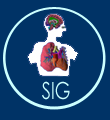
.png)
| Publication record 1. Principles, Ontological Framework and Implementation of the FMA Ontology Rosse C, Mejino JVL. 2003. A reference ontology for biomedical informatics: the Foundational Model of Anatomy. J Biomed Inform. 36:478-500.
Rosse, C., M. Ben-Said, K.R. Eno, J.F. Brinkley 1995 Enhancements of Anatomical Information in UMLS Knowledge Sources . In: Gardner RM, editor. Proc 19th Annu Symp Comput Appl Med Care (SCAMC 95). Philadelphia : Hanley & Belfus,1995: 873-877.
Rosse, C., Shapiro, L.G. and Brinkley, JF. 1998. The Digital Anatomist Foundational Model: Principles for Defining and Structuring its Concept Domain. In Chute EG (ed): A paradigm shift in health care information systems: clinical infrastructures for the 21st century. JAMIA Symposium Supplement. '98: 820-824
Rosse C, Mejino JL, Modayur BR, Jakobovits R, Hinshaw KP, Brinkley JF. 1998. Motivation and organizational principles for anatomical knowledge representation: the Digital Anatomist Symbolic Knowledge Base. J. Am. Med. Informatics Assoc.5:17-40.
Mejino, J.L.V. and Rosse ,C. 1999. Conceptualizations of Anatomical Spatial Entities in the Digital Anatomist Foundational Model. J. Am. Med. Assoc. AMIA '99 Symp. Suppl. '99: 112-116.
Michael J, Mejino JLV, Rosse C. 2001. The role of definitions in biomedical concept representation. JAMIA Symposium Supplement. '01:463-467.
2. Extensions of the FMA Ontology beyond human macroscopic anatomy Martin RF, Mejino JLV, Bowden DM, Brinkley JF, Rosse C. 2001. Foundational model of neuroanatomy: its implications for the Human Brain Project. JAMIA Symposium Supplement. '01:438-442. Martin RF, Rickard K, Mejino JLV, Agoncillo AV, Brinkley JF, Rosse C. The evolving neuroanatomical component of the Foundational Model of Anatomy. In proc, AMIA fall symposium. 2003; 927.
Agoncillo AV, Mejino JLV, Rickard KL, Detwiler LT, Rosse C. Proposed classification of cells in the Foundational Model of Anatomy. Proc AMIA Symp.2003; 775.
Gennari, J.H., Silberfein, A., and Wiley, J.C. (2005). Integrating genomic knowledge sources through an anatomy ontology. Proceedings of the Pacific Symposium on Biocomputing 2005, pp. 115-126 Travillian RS, Rosse C, Shapiro LG. An Approach to the Anatomical Correlation of Species through the Foundational Model of Anatomy. Proc AMIA Symp. 2003; 669-673. Travillian RS, Gennari JH, Shapiro LG. Of mice and men: design of a comparative anatomy information system. Proc AMIA Symp. 2005.
Cook DL, Mejino JLV Jr, Rosse C. Rosse C. Evolution of a Foundational Model of Physiology: Symbolic Representation for Functional Bioinformatics . In Proceedings, MedInfo 2004 , pages 336-340, San Francisco , CA .
Kumar A, Yip YL, Smith B, Marwede D, Novotny D. An ontology for carcinoma classification for clinical bioinformatics. Stud Health Technol Inform. 2005;116:635-40.
Smith B, Kumar A, Ceusters W, Rosse C. On carcinomas and other pathological entities. Comparative and Functional Genomics 2005
Rosse C, Kumar A, Mejino JLV, Cook DL, Detwiler LT, Smith B.2005. A strategy for improving and integrating biomedical ontologies. In, Proceedings, American Medical Informatics Association Fall Symposium, Washington.DC.
3. Relations in the FMA Ontology and their influence on other ontologies Neal, P.J., Shapiro, L.G. and Rosse, C. 1998. The Digital Anatomist Spatial Abstraction: a scheme for the spatial description of anatomical entities. In Chute CG (ed): A paradigm shift in health care information systems: clinical infrastructures for the 21st century. JAMIA Symposium Supplement. '98:423-427.
Mejino JLV Jr, Agoncillo AV, Rickard KL, Rosse C. Representing Complexity in Part-Whole Relationships within the Foundational Model of Anatomy. Proc AMIA Symp. 2003;450-454.
Smith B, Rosse C. The role of foundational relations in the alignment of biomedical ontologies. In Proceedings, MedInfo 2004 , pages 444-448, San Francisco , CA .
Mejino JLVJ, Rosse C. Symbolic modeling of structural relationships in the Foundational Model of Anatomy. In: Proceedings, First International Workshop on Formal Biomedical Knowledge Representation (KR-MED 2004). Whistler Mountain , Canada ; 2004.
Smith B, Mejino Jr. JLV, Schulz S, Kumar A, Rosse C: Anatomical Information Science. In Cohn AG, Mark DM (editors): Spatial Information Theory; Proceedings of International Conference, COSIT 2005, Ellicottville, NY, USA, September 14-18, 2005. p.149.
Smith B , Ceusters W , Klagges B , Köhler J , Kumar A , Lomax J , Mungall C , Neuhaus F , AL Rector , Rosse C.: Relations in biomedical ontologies. Genome Biology 2005, 6: R46 doi:10.1186/gb-2005-6-5-r46
Donnelly M, Bittner T, Rosse C. 2005. A formal theory for spatial representation and reasoning in biomedical ontologies. Artif Intell Med.
4. Querying the FMA Ontology Mork P, Brinkley JF, Rosse C. 2003. OQAFMA querying agent for the Foundational Model of anatomy: providing flexible and efficient access to a large semantic network. J Biomed Inform 2003;36:501-517 . Distelhorst G, Srivastava V, Rosse C, Brinkley JF. A Prototype Natural Language Interface to a Large Complex Knowledge Base, the Foundational Model of Anatomy. Proc AMIA Symp. 2003: 200-204 Detwiler LT, Mejino JLV, Rosse C, Brinkley JF. Efficient web-based navigation of the Foundational Model of Anatomy. Proceedings AMIA Symposium. 2003; 829. Detwiler LT, Chung E, Li A, Mejino JLV Jr, Agoncillo AV, Brinkley JF, Rosse C. A Relation-Centric Query Engine for the Foundational Model of Anatomy. In Proceedings, MedInfo 2004 , pages 341-345, San Francisco , CA 5. Evaluation of the FMA Ontology Shapiro LG, Chung E, Detwiler T, Mejino JLV, Agoncillo AV, Brinkley JF, Rosse C. Processes and problems in the formative evaluation of an interface to the Foundational Model of Anatomy knowledge base. J Am Med Inform Assoc. 2005; 12:35 -46.
Smith B, Köhler J, Kumar A: On the application of formal principles to life science data: A case study in the Gene Ontology. DILS 2004: Data Integration in the Life Sciences . 2004;:124-139.
Zhang S, Bodenreider O . Law and order: Assessing and enforcing compliance with ontological modeling principles. Computers in Biology and Medicine 2005.
6. Uses and Selected Applications of the FMA Ontology 6.1. Research in ontologies, informatics and computer science Mejino, J.L. and Rosse, C. 1998. The Potential of the Digital Anatomist Foundational Model for assuring consistency in UMLS sources. In Chute EG (ed): A paradigm shift in health care information systems: clinical infrastructures for the 21st century. JAMIA Symposium Supplement. '98:825-829 Agoncillo, A., Mejino JLV, 1999. Rosse C. Influence of the Digital Anatomist Foundational Model on Traditional Representations of Anatomical Concepts. J. Am. Med. Assoc. AMIA '99 Symp. Suppl. '99: 2-6. Noy NF, Mejino JLV Jr., Musen MA, Rosse C. 2004. Pushing the envelope: challenges in frame-based representation of human anatomy. Data & Knowledge Engineering 2004;48:335-359.
Peter Mork, Philip A. Bernstein: Adapting a Generic Match Algorithm to Align Ontologies of Human Anatomy. ICDE 2004: 787-790
Songmao Zhang, Peter Mork, Olivier Bodenreider: Lessons learned from aligning two representations of anatomy. KR-MED 2004: 102-108
Songmao Zhang,Olivier Bodenreider: Investigating Implicit Knowledge in Ontologies with Application to the Anatomical Domain. Pacific Symposium on Biocomputing 2004 : 250-261 Zhang S, Bodenreider O . Alignment of multiple ontologies of anatomy: deriving indirect mappings from direct mappings to a reference. Proc AMIA Symp 2005 Aleksovski Z, ten Kate W, van Harmelen F. (2006). Exploiting the structure of background knowledge used in ontology matching. Ontology Matching Workshop, ISWC, Athens, Georgia, USA. Rickard, K. L. and Mejino, J. L. V. and Martin, R. F. and Agoncillo, A. V. and Rosse, C. (2004) Problems and Solutions with Integrating Terminologies into Evolving Knowledge Bases. In Proceedings, MedInfo 2004 , pages 420-424, San Francisco, CA.
Jakobovits RM, Rosse C, Brinkley JF. 2002. WIRM: An Open Source Toolkit for Building Biomedical Web Applications. J. Am. Med. Informatics Assoc;9:557-570. Detwiler LT, Brinkley, JF. (2006). Custom views of reference ontology. In Proceedings, American Medical Informatics Association Fall Symposium, Bethesda, MD. Brinkley JF, Detwiler LT, Gennari JH, Rosse C, Suciu D. (2006) A framework for using reference ontologies as a foundation for the semantic web. In Proceedings, American Medical Informatics Association Fall Symposium, Bethesda, MD. Detwiler LT, Rosse C. (2005) Knowledge base version reintegration. In Proceedings, American Medical Informatics Association Fall Symposium, Washington DC . 6.2. Research in file format conversion Golbreich C, Zhang S, Bodenreider O. (2006) The foundational model of anatomy in OWL: Experience and perspectives. Journal of Web Semantics, Web Semantics: Science, Services and Agents on the World Wide Web, Volume 4, Issue 3, Pages 181-195. Dameron O, Rubin DL, Musen M. (2005). Challenges in converting frame-based ontology into OWL: the Foundational Model of Anatomy case-study. In Proceedings, American Medical Informatics Association Fall Symposium, 181-185, Washington DC . 6.3. Research in biomedical imaging Brinkley, J.F. and Rosse, C. 1997. The Digital Anatomist distributed framework and its applications to knowledge-based medical imaging. J. Am. Med. Informatics Assoc.4:165-183. Brinkley JF, Rosse C. 2002. Imaging informatics and the Human Brain Project: the role of structure. Year Book of Medical Informatics. Haux R, Kulikowski C. editors: Year Book of Medical Informatics ‘02. Schattauer and the International Medical Informatics Association. Stutgart. 131-148. Brinkley JF, Rosse C. 2002. Imaging and the Human Brain Project: a review. Methods of Information in Medicine 41:245-260. 6.4. Design of information systems Brinkley, J.F., Bradley, S.W., Sundsten, J. W. and Rosse, C. 1997. The Digital Anatomist Information System and Its Use in the Generation and Delivery of Web-Based Anatomy Atlases. Computers in Biomed. Res. 30:472-503. Brinkley, J.F., Wong, B.A., Hinshaw, K.P. and Rosse, C. 1999 Design of an Anatomy Information System IEEE 19:3 pp 38-48. Brinkley, J.F. and Rosse, C. 1998. Requirements for an on-line knowledge-based anatomy information system. In Chute EG (ed): A paradigm shift in health care information systems: clinical infrastructures for the 21st century. JAMIA Symposium Supplement. '98:892-896 6.5. Clinical Informatics Kalet, I.J., Wu, J., Lease, M., Austin-Seymour, M.M., Brinkley, J.F., and Rosse, C. 1999 Anatomical information in radiation treatment planning. J. Am. Med. Assoc. AMIA '99 Symp. Suppl. '99: 291-295. Jakobovits R, Brinkley JF, Rosse C, Weinberger E. 2001. Enabling clinicians, researchers and educators to build custom web-based biomedical information systems. JAMIA Symposium Supplement. '01:279-283 6.6. Education The Digital Anatomist Interactive Atlases: http://sig.biostr.washington.edu/projects/da/
Wong, B.A., Rosse, C., and Brinkley, J.F. Semi-automatic Scene Generation using the Digital Anatomist Foundational Model. J. Am. Med. Assoc. AMIA '99 Symp. Suppl. 1999: 637-641 Campbell B, Rosse C, Brinkley JF. 2001. The virtual anatomy lab: a hands-on anatomy learning environment. In Westwood JD , Miller Hoffman H, Mogel JT, Stredney D, Robb RA. (editors) Medicine meets virtual reality 2001. IOS Press Amsterdam . pp 85-87.
|


